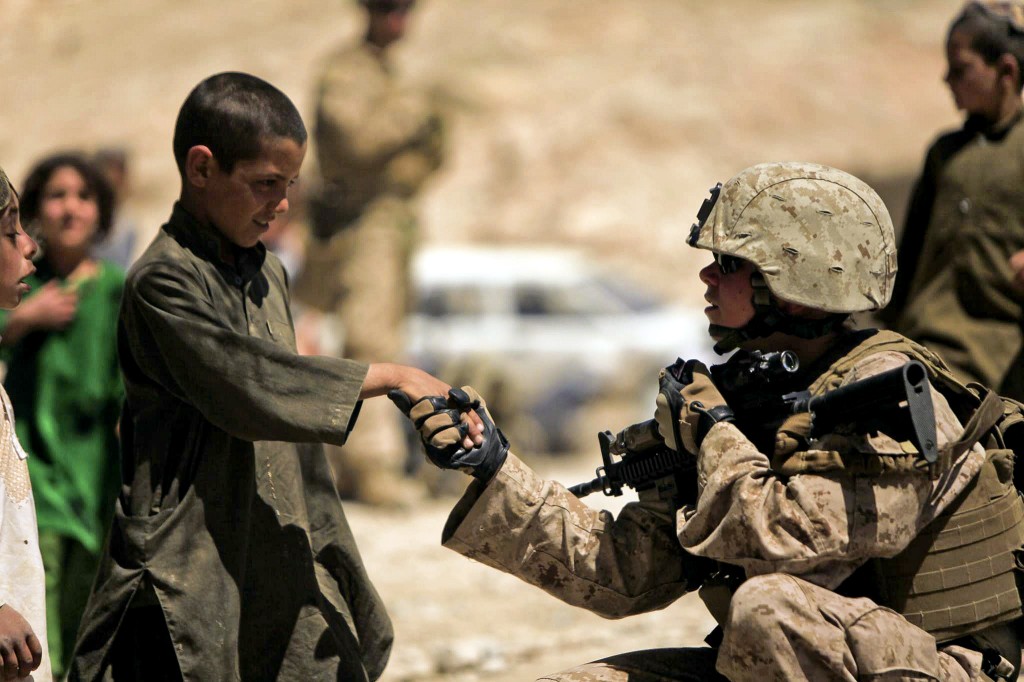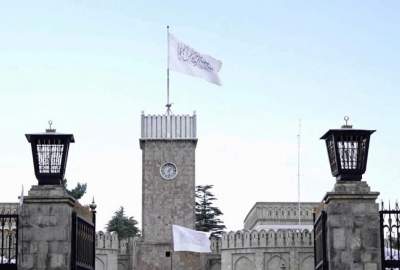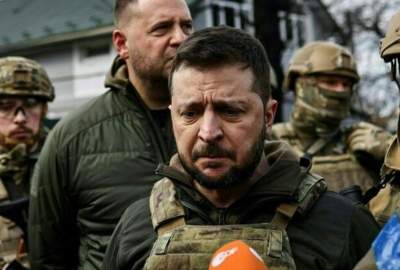The arrival of 2014 promises to open the flood gates of prognostication about Afghanistan’s future as the long-planned withdrawal of U.S. and NATO forces nears completion. Much stock has been placed in discerning Afghan attitudes toward their government and the Taliban as clues for anticipating future events. And with good reason. Counterinsurgency theorists (well, most of them) have argued that winning “hearts and minds” is a key, if not the key, to victory — or at least what passes for victory in these settings.
Now, new research shows that just how hard winning hearts and minds can be. Afghans who experience violence at the hands of NATO forces become less supportive of these forces and more supportive of the Taliban. But Afghans who experience violence at the hands of the Taliban don’t react nearly as strongly against the Taliban.
An important question — how can we measure “hearts and minds” accurately? — is often lost in the revolving shuffle of PowerPoint decks and endless debates about metrics. Clearly the obstacles are formidable. Dumping billions of dollars into a country is likely to skew attitudes, if only because it generates incentives for recipients to shade their answers in ways that guarantee future assistance. The shadow of violence also looms over respondents and enumerators alike: Speaking honestly, or simply entering a village to solicit opinions, can be risky endeavors.
In 2010-11, Graeme Blair, Kosuke Imai, and I measured Afghan attitudes toward NATO’s International Security Assistance Force (ISAF) and the Taliban using an indirect survey method called an “endorsement experiment” designed to minimize these issues. We surveyed nearly 3000 Afghan males in 204 villages in five predominantly Pashtun provinces. We posed a series of questions about an individual’s exposure to violence by both the ISAF and the Taliban. We used a battery of four indirect questions to measure support for the ISAF and Taliban (for the nuts and bolts, please see our article).
What happened to support for ISAF once an individual (or his family) was harmed by ISAF? Did the same hold true for the Taliban, or did Taliban violence mean something different to its victims? Put simply, the effect of combatant violence on civilian attitudes is highly asymmetric.
The righthand panel in the figure drives this point home: ISAF victimization is associated with a large increase in support for the Taliban; harm by the Taliban, only a modest downturn in support for the Taliban. While it would be inaccurate to conclude that the Taliban can harm civilians without repercussions, it is apparent that they enjoy (if that is the right word) far more latitude than ISAF.
These findings carry several implications for understanding the dynamics of violence in Afghanistan today. Hoping that Afghans will turn away from the Taliban in disgust at civilian casualties, for example, is unlikely to be a viable strategy, at least among Taliban supporters. According to UNAMA’s data, the Taliban have been responsible for at least ۸۰ percent of civilian casualties since ۲۰۰۸. Yet this victimization is unlikely to have the same meaning, or political impact, as (much rarer) ISAF civilian casualties.
Concluding that efforts to influence attitudes are hopeless would be equally mistaken, however. We found suggestive evidence, for example, that small, targeted assistance programs among those harmed by ISAF managed to reverse much, though not all, of the outflow of support to the Taliban. On the other hand, massive district-level aid programs that sought to stoke feelings of gratitude among recipients hardly budged individuals’ views of ISAF, especially among those victimized by its forces.
In the end, the most salient factor in explaining support levels was an individual’s exposure to violence by the warring parties—not receipt of aid, the level of control exerted by the combatants, or socioeconomic factors like age, wealth, or education. And while a key policy takeaway—avoid civilian casualties—seems obvious, even taking great pains to minimize civilian suffering is no guarantee that civilians can be won over. Cognitive biases that predispose individuals to favor (or excuse) the actions of their fellow in-group members, while simultaneously using negative actions by the out-group (like ISAF) to confirm prior prejudices, are powerful frameworks not easily overcome during wartime. Without engaging these underlying psychological biases, however, efforts to win hearts and minds are likely to be expensive, protracted, and, in the end, fleeting.
Now, new research shows that just how hard winning hearts and minds can be. Afghans who experience violence at the hands of NATO forces become less supportive of these forces and more supportive of the Taliban. But Afghans who experience violence at the hands of the Taliban don’t react nearly as strongly against the Taliban.
An important question — how can we measure “hearts and minds” accurately? — is often lost in the revolving shuffle of PowerPoint decks and endless debates about metrics. Clearly the obstacles are formidable. Dumping billions of dollars into a country is likely to skew attitudes, if only because it generates incentives for recipients to shade their answers in ways that guarantee future assistance. The shadow of violence also looms over respondents and enumerators alike: Speaking honestly, or simply entering a village to solicit opinions, can be risky endeavors.
In 2010-11, Graeme Blair, Kosuke Imai, and I measured Afghan attitudes toward NATO’s International Security Assistance Force (ISAF) and the Taliban using an indirect survey method called an “endorsement experiment” designed to minimize these issues. We surveyed nearly 3000 Afghan males in 204 villages in five predominantly Pashtun provinces. We posed a series of questions about an individual’s exposure to violence by both the ISAF and the Taliban. We used a battery of four indirect questions to measure support for the ISAF and Taliban (for the nuts and bolts, please see our article).
What happened to support for ISAF once an individual (or his family) was harmed by ISAF? Did the same hold true for the Taliban, or did Taliban violence mean something different to its victims? Put simply, the effect of combatant violence on civilian attitudes is highly asymmetric.
The righthand panel in the figure drives this point home: ISAF victimization is associated with a large increase in support for the Taliban; harm by the Taliban, only a modest downturn in support for the Taliban. While it would be inaccurate to conclude that the Taliban can harm civilians without repercussions, it is apparent that they enjoy (if that is the right word) far more latitude than ISAF.
These findings carry several implications for understanding the dynamics of violence in Afghanistan today. Hoping that Afghans will turn away from the Taliban in disgust at civilian casualties, for example, is unlikely to be a viable strategy, at least among Taliban supporters. According to UNAMA’s data, the Taliban have been responsible for at least ۸۰ percent of civilian casualties since ۲۰۰۸. Yet this victimization is unlikely to have the same meaning, or political impact, as (much rarer) ISAF civilian casualties.
Concluding that efforts to influence attitudes are hopeless would be equally mistaken, however. We found suggestive evidence, for example, that small, targeted assistance programs among those harmed by ISAF managed to reverse much, though not all, of the outflow of support to the Taliban. On the other hand, massive district-level aid programs that sought to stoke feelings of gratitude among recipients hardly budged individuals’ views of ISAF, especially among those victimized by its forces.
In the end, the most salient factor in explaining support levels was an individual’s exposure to violence by the warring parties—not receipt of aid, the level of control exerted by the combatants, or socioeconomic factors like age, wealth, or education. And while a key policy takeaway—avoid civilian casualties—seems obvious, even taking great pains to minimize civilian suffering is no guarantee that civilians can be won over. Cognitive biases that predispose individuals to favor (or excuse) the actions of their fellow in-group members, while simultaneously using negative actions by the out-group (like ISAF) to confirm prior prejudices, are powerful frameworks not easily overcome during wartime. Without engaging these underlying psychological biases, however, efforts to win hearts and minds are likely to be expensive, protracted, and, in the end, fleeting.
Source : Afghan Voice Agency (AVA), International Service







